Supermarkets are pushing into the convenience sector with local formats. How are the independents and symbol groups fighting to stay relevant?
Competition is heating up in the convenience sector. Now more than ever, supermarkets are investing in convenience formats to strengthen their presence in local communities – and independent retailers are feeling the pressure.
“Everyone wants a piece of the convenience pie,” says Nisa retailer Amrit Singh. “We’re the most attractive proposition for the fmcg market. The mults are looking for ways to widen their footprint in this space.”
It’s a valid depiction. Asda is ploughing ahead with its Express store openings, bolstered by the conversions of Co-op and EG Group sites. Morrisons expects to finish converting its McColl’s estate to its Daily format by the end of the year. Sainsbury’s announced plans to open 20 more convenience stores.
It’s a clever strategy. It brings consumers greater flexibility on where they can shop while helping the supermarkets broaden their presence in areas where they are underrepresented. Plus, the convenience sector’s resilience during times of crisis has upped its appeal. It proved pandemic-proof – stores enjoyed an influx of new customers as they stayed close to home.
Even though the cost of living crisis has drawn footfall to the discounters more recently, the ‘often and little’ approach continues to benefit convenience stores as shoppers keep a closer eye on spending.
It’s not just expansion that’s worrying independent retailers: supermarkets are investing in price, own label and loyalty across their convenience estates too.
Read more:
-
Compared: symbols, franchises, fascias and convenience in numbers
-
Inside Henderson Group’s ‘food-to-go emporium’
The Co-op rolled out a massive £70m investment in lower prices last summer, and this week announced further improvements to its Member Prices proposition, offering instant savings on a range of branded and own-brand grocery lines rather than traditional loyalty rewards.
If Member Prices feels similar to Tesco’s Clubcard Prices, that’s because it is. And Tesco’s successful introduction of the scheme into Express stores back in 2022 has helped it to grow its share in convenience.
Sainsbury’s is yet to push its Nectar Prices into convenience, but it’s surely only a matter of time. It has, however, doubled the number of its cheapest own-label products stocked in its Local stores during the past year. Morrisons also made a big play of launching its Savers range into convenience, after the mults were blasted by MPs over the disparity between the prices at their larger and smaller stores.
Clearly the pressure is piling up. But that growing appetite for convenience has turned the sector’s innovation up a notch as it aims to stand out from the crowd. As Singh says: “We thrive regardless. We’re agile, nimble, and ferociously driven. At the end of the day, it’s survival of the fittest.”
So how are symbol groups, franchises and wholesalers evolving to stay relevant to shoppers?
Hybrid concepts
The term ‘hybrid’ has become a buzzword in the sector, and Bestway has led the way. Following the launch of its dual-branded Costcutter and Bargain Booze fascia in 2022, the wholesaler has now launched 18 hybrid stores.
The premise of the concept was to bring “different shopping experiences” and the “best commercial returns” for retailers by incorporating the off-licence chain inside the store to complement Costcutter’s grocery proposition, which features Co-op own label. It appears to have done the trick, with the concept increasing store sales by up to 220%.
“We’re assessing how we can provide the optimum range, price and promotional packages via our hybrid stores,” says Bestway Wholesale MD Dawood Pervez.
But it’s not a cookie-cutter approach. It’s about catering the offer “to meet the needs of the local community”. That’s what spurred Bestway to create a “posher version” of the concept for areas with a “higher sociodemographic profile”, by fusing Costcutter with its more premium off-licence offer, Wine Rack. Featuring wines, champagne and spirits as well as beers and craft ales, Bestway debuted a Wine Rack-Costcutter hybrid with a company-owned store in Guildford last month.
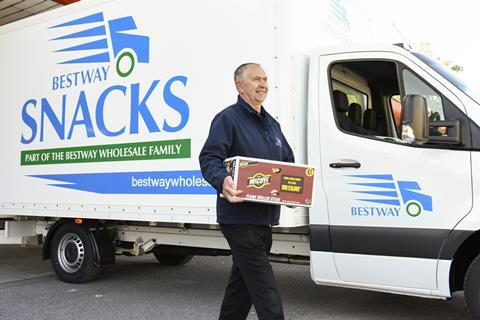
And it’s not just Bestway’s various symbol fascias joining forces. The wholesale giant is exploring the dual-branded concept with symbol group operator SimplyFresh.
COO Kash Khera says two SimplyFresh stores have been earmarked for a possible tie-up with Wine Rack, and he is seeking retailers operating under SimplyLocal – its more value-led format – for a dual-branded fascia with Bargain Booze.
SimplyFresh is also looking at tie-ups beyond building a strong booze offer, having set its sights on Amazon’s Just Walk Out technology last year. Following an initial launch at a LittleFresh branded store at Gatwick Airport in December, SimplyFresh is now planning to roll out the tech to three more independent stores this year.
“We believe this technology is the future, not just for the grocery sector, but for all retail stores, so we’re laying the foundations early,” adds Khera.
Food to go
The symbol group is also renewing its focus on food to go this year, with plans to collaborate with new foodservice partners. Khera says it’s becoming an increasingly important way to drive footfall, and other symbols are capitalising on that too.
The Spar store at Roadchef’s Strensham North motorway services was refurbished last year and fitted with the symbol group’s new Grab & Go design. The allocated food-to-go area, which features the likes of Chicago Town pizza, Hudson’s hot dogs and F’real milkshake units, is highlighted with “colours, materials, and neon lights to create in-store theatre”, Spar says.
Booker is also chasing the ‘on the go’ trend. Following the traction its symbol Premier gained for its drinks-to-go Refresh station, which includes Tango Ice Blast and Jolly Rancher slush machines, it launched a refrigerated Pop Cave concept for soft drinks last summer. It comprises a chilled room that houses all soft drinks in one area of the store, sizing up to 200 sq ft. Booker says this created “in-store theatre” that was “pulling footfall to quiet areas at the back of the store”.
Clearly, the novelty of transient customers returning post-Covid hasn’t worn off, making investment in food to go a top priority.
Even independents are showing initiative to innovate their food-to-go offer. Shaan Chaudry, owner of Triple A Foodhall in Nuneaton, introduced a vast food-to-go range last year. It includes a bakery section “the equivalent size to what you’d find in the discounters”, as well as a cake display “similar to a Starbucks or Costa”. The store also makes gelato, Neapolitan pizzas, and handmade baguettes fresh on-site every day.
The food-to-go range, which accounts for 20% of the store’s turnover, complements its fresh and chilled offer supplied by Costcutter, including Co-op own label. There is also a Bargain Booze off-licence proposition as part of Bestway’s hybrid concept.
Chaudry says his value offer is amplified by the Iceland range, which was introduced when the supermarket entered a wholesale trial with Bestway in 2022. Since then, the relationship has seen the launch of a Costcutter and Iceland Local hybrid, in conjunction with SGN Retail.

Value proposition
As the nation continues to grapple with the cost of living, it’s logical a tie-up with Iceland appeals to retailers. Demand for value has also encouraged symbols, franchises and wholesalers to invest in own-label ranges.
Unitas relaunched its own-label range in October to focus “more on the value shoppers were looking for”, the buying group says. Now called Local Living, it plans to expand the range in 2024 with more ambient, household and soft drink products.
One Stop, meanwhile, added 16 new own-label lines as part of its fresh overhaul in October, following demand from shoppers looking to scratch cook meals.
“It was a conscious response to the changing needs of today’s shoppers who are looking for fresher and healthier choices,” says Marianne Aitken, head of product at One Stop. “It’s these close-knit relationships with customers that enhance trust of the shops in local communities.”
Similar local knowledge was also key to the building of a new, Costcutter-supplied 24-hour store, called Food+Liquor, that opened last month.
Its round-the-clock operation was primarily influenced by the 24-hour children’s hospital next door and Aston University nearby, with the aim of being a destination for staff on night shifts and students.
SomeoneCreative head of design Davinder Jheeta, who designed the store, says: “When you tap into your independent roots and champion independent thinking, you can make a notable difference with your customers.
“It’s great to see that retailers are celebrating their independence more and backing themselves to win with customers. I always say: Multiples can build stores, but independents build community.”
Price focus paying off for Co-op and Tesco c-stores
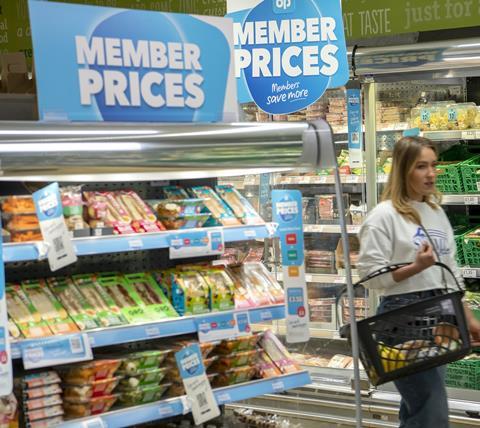
It’s been a long time since the Co-op was this bullish about its future, and convenience operators large and small will need to take note.
The society has had some tough years of late, but under the new strategy of group CEO Shirine Khoury-Haq and Food MD Matt Hood it has bounced back.
Key has been a much sharper focus on pricing via an overhaul of its membership offer.
Last year the Co-op grew active member numbers by 15% to five million, citing Member Prices as the catalyst for its growth. And just this week, as it doubled down with member-only discounts on a further 117 SKUs (including branded lines for the first time), it set a new target to hit eight million members by 2030 – and announced plans to more than double new franchise stores, open 400 new Nisa stores and acquire new Co-op stores.
The changes were clearly timely amid the cost of living crisis. The need for value has become increasingly important for shoppers deciding whether to visit a convenience store.
That is the clear takeaway from the latest figures from Lumina Intelligence’s Convenience Tracker Programme.
The cost of living crisis has seen an overall decline in shoppers visiting c-stores. Between May 2022 and October 2023 the percentage of people who visited a convenience store in the previous seven days fell from 65% to 61%.
In October 2021, the percentage of shoppers describing themselves as value-led was 78%. This rose to 82% at the peak of the cost of living crisis a year later, but was still at 80% in the latest figures from October 2023.
In contrast other drivers such as sustainability, provenance, health or social consciousness all fell sharply over the past couple of years.
The Lumina data suggests the focus the Co-op and Tesco Express have put on both own brand and loyalty is paying off.
The Co-op dominates in terms of share of shopper visits to convenience stores. It maintained its share of visits at 29% between October 2022 and 2023, while Tesco Express’s share grew from 15% to 16%
Lumina says that Tesco’s extension of its Clubcard Prices into convenience and Co-op’s Member Prices “have been instrumental in keeping shoppers engaged during the cost of living crisis and helped retailers keep share of market”.
The continued rollout of Tesco own brand into Premier stores also helped it grow share, from 5% to 6%.




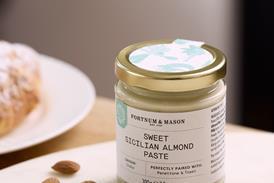


![final_high[82]](https://dmrqkbkq8el9i.cloudfront.net/Pictures/480x270/7/4/0/314740_final_high82_894087.jpg)
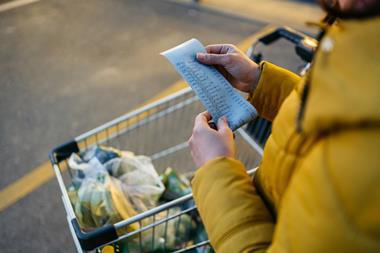
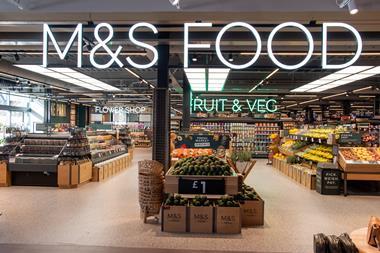

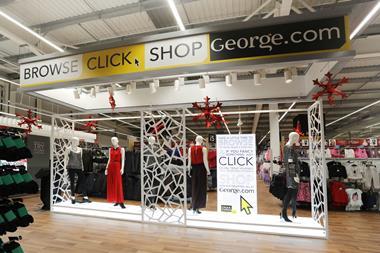
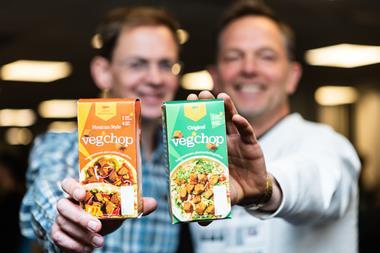







No comments yet